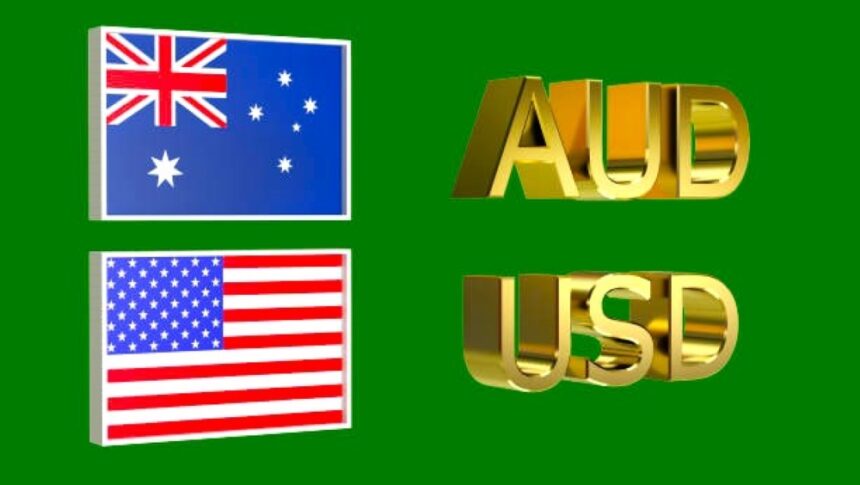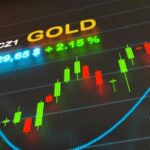Australian Dollar Rise asthe US dollar declines after reaching a two-year high of 108.07 on Friday.
As the US dollar (USD) continues its downward correction, the Australian dollar (AUD) strengthens on Monday. Bond market optimism after President-elect Donald Trump appointed fund manager Scott Bessent, a seasoned Wall Street personality and fiscal conservative, as US Treasury secretary contributed to this shift.
Australian stocks followed Wall Street’s lead, the S&P/ASX 200 Index hit new all-time highs above 8,450.
Foreign inflows most likely helped the AUD as well fueled by the domestic share market’s ascent to new all-time highs. The momentum on Wall Street mirrored by Australian shares, which saw the S&P/ASX 200 Index rise 0.63% to surpass 8,450. The Dow Jones closed at yet another record high on Friday, adding to the upbeat mood.
The Reserve Bank of Australia’s (RBA) hawkish stance on future interest rate decisions also helped to support the Australian dollar. Australia’s October Monthly Consumer Price Index (CPI), a key metric for influencing expectations regarding domestic monetary policy, is currently the focus of traders’ attention.
Interest rates will continue to be restrictive until there is convincing proof that inflation is returning to its target in a sustainable manner, the RBA stressed in the minutes of its most recent meeting. But the central bank also emphasized that any upcoming changes to policy would rely on data, highlighting the significance of forthcoming economic reports.
Daily Market Movers:Australian Dollar rise as US dollar corrects downward after reaching two-year highs.
After reaching a two-year high of 108.07 on Friday, the US Dollar Index (DXY), which measures the performance of the US dollar against six major currencies, has since cooled to about 107.00. Nonetheless, there still few downside risks for the USD because the Fed may slow rate cuts, according to recent, strong preliminary S&P Global US Purchasing Managers’ Index (PMI) data.
According to the CME FedWatch Tool, futures traders are now giving the Federal Reserve a 50.9% chance of reducing rates by a quarter point, down from roughly 61.9% a week ago. Treasury yields, meanwhile, continue to be supported by expectations that the proposed tax, immigration, and tariff policies of President-elect Donald Trump may increase inflation and limit the Fed’s ability to further lower borrowing costs.
S&P Global US Composite PMI increased to 55.3, marking the most robust expansion in private sector activity since April 2022.
In November, the S&P Global US Composite PMI increased to 55.3, marking the most robust expansion in private sector activity since April 2022. With the largest growth in the services sector since March 2022, the US Services PMI jumped to 57.0 from 55.0 in October, well above the market’s forecast of 55.2. In the meantime, in line with market expectations, the US Manufacturing PMI rose from 48.5 in October to 48.8.
For the second time in three months, there was a slight decline in private sector output, as evidenced by the Judo Bank Australia PMI Composite Output Index, which fell from 50.2 in October to 49.4 in November The Manufacturing PMI contracted for ten consecutive months, rising from 47.3 in October to 49.4 in November. The first decline in services activity in a decade was indicated by the Services PMI, which dropped from 51.0 to 49.6.
The Reserve Bank of Australia’s first rate cut being forecast by the country’s four biggest banks. Westpac raised its initial cut prediction from February to May. The cut also anticipated in May by National Australia Bank (NAB). In the meantime, both ANZ and the Commonwealth Bank of Australia (CBA) are cautiously predicting a rate cut in February.
For the week ending November 15, US Initial Jobless Claims fell to 213,000, below the anticipated 220,000 and down from a revised 219,000 (previously 217,000) the week before.
The minutes of Reserve Bank of Australia November meeting showed that the board of the central bank is still concerned about the possibility of additional inflation and emphasized the significance of keeping a restrictive monetary policy. Board members emphasized that all options are still open for future adjustments, even though they pointed out that there was no “immediate need” to change the cash rate.
Austan Goolsbee, president of the Federal Reserve Bank of Chicago, made headlines Thursday when he said that inflation is gradually getting closer to the 2% target.
Austan Goolsbee, president of the Federal Reserve Bank of Chicago, made headlines Thursday when he said that inflation is gradually getting closer to the 2% target. The labor market is getting closer to stability and full employment, according to Goolsbee. He believes that during the course of the upcoming year, interest rates may decline considerably from where they are now.
Fed Chair Jerome Powell minimized the possibility of rate cuts in the near future, emphasizing the economy’s tenacity, strong labor market, and enduring pressures from inflation. Powell stated, “The economy is not sending any signals that we need to hurry to lower rates.”









